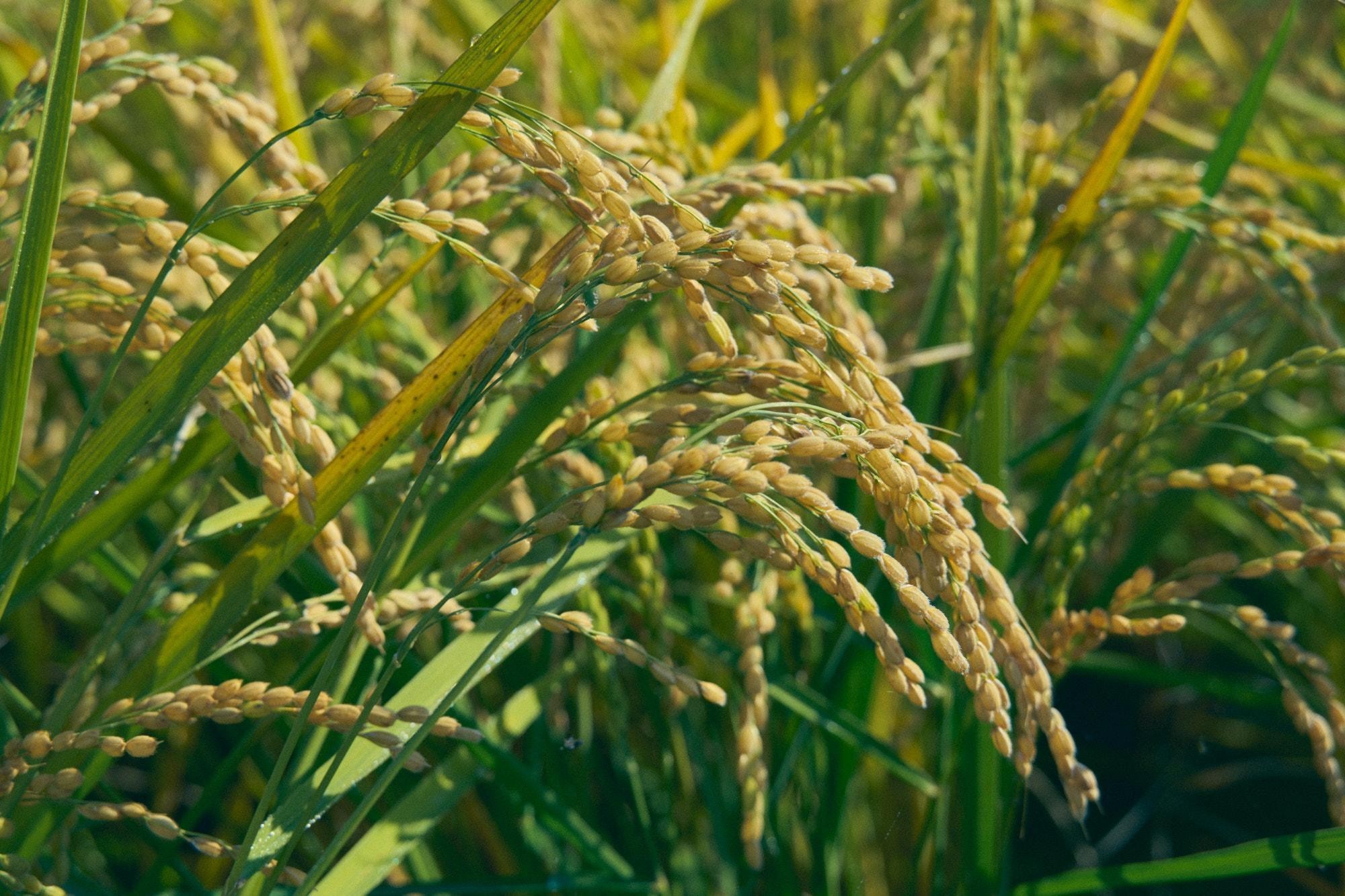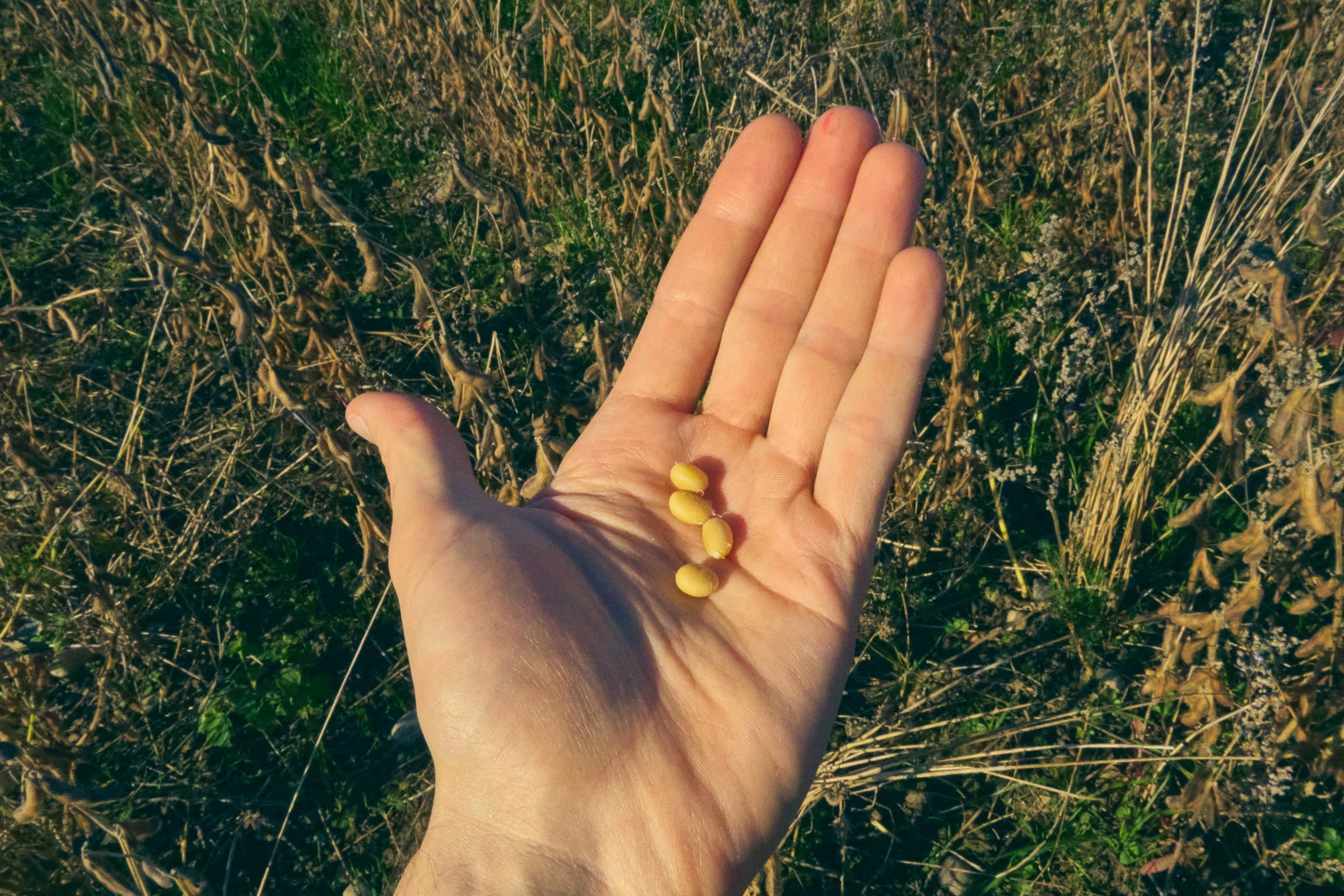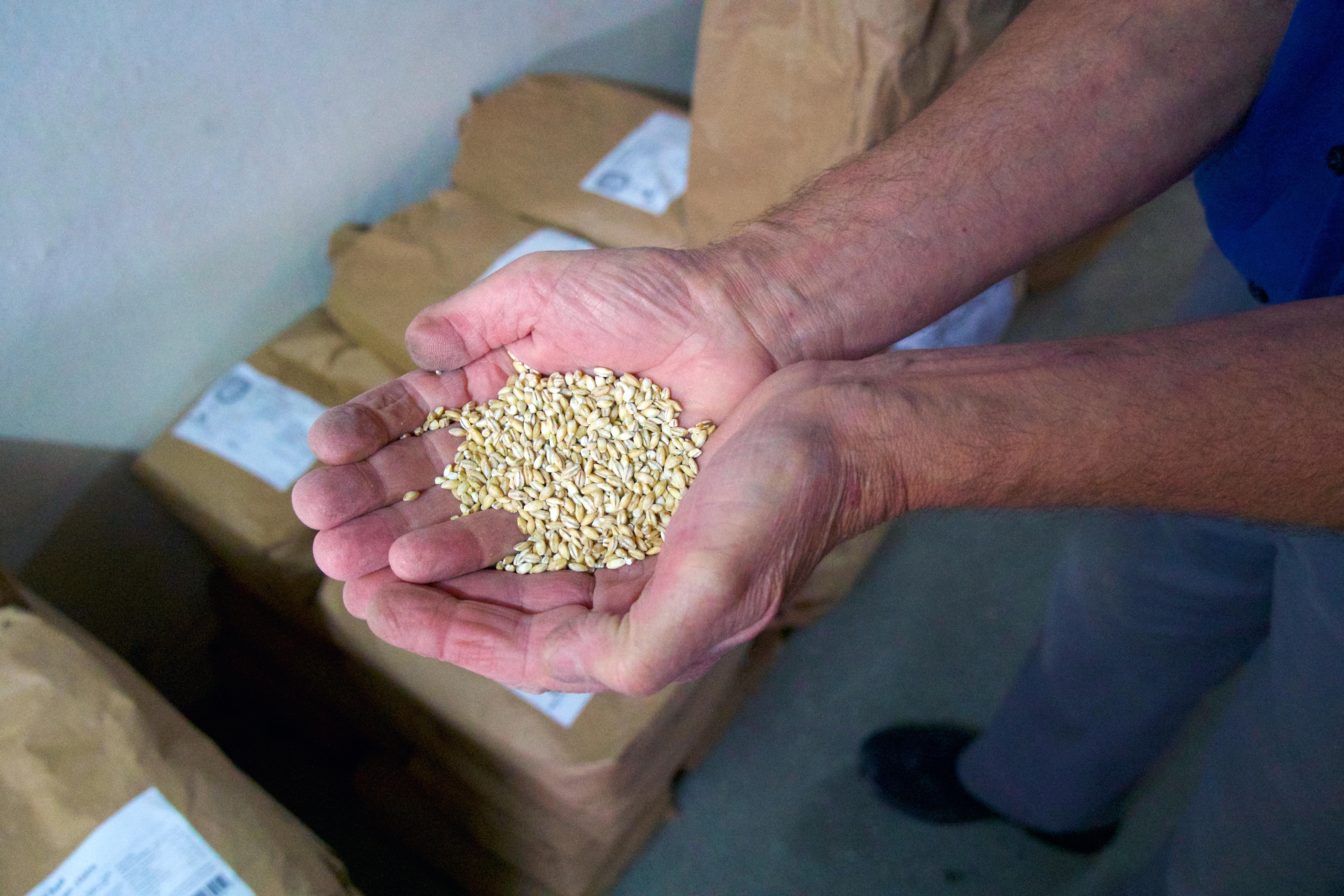Ingredients
We source all ingredients for our ferments as directly as possible from nearby producers. 100% organic (Bio Suisse “Knospe”) quality is a given for us. The main components of our products are grains and legumes – raw materials that can continue to be grown sustainably in our region in the future.
Ongoing exchange with farmers is an essential part of how we further develop our products.
The only exception: our koji spores, which we source from traditional Japanese companys that have been cultivating and ensuring the quality of these spores for centuries.

Rice
For nearly half of the world’s population, rice is the number one staple food. Especially across the Asian continent, this grain reigns supreme. What is often forgotten, however, is Europe’s long-standing tradition of rice cultivation. In Northern Italy, particularly in the regions of Lombardy, Piedmont, and Veneto, rice has been cultivated as a crop for over 500 years. Since the 19th century, this area has been the most important rice-growing region in Europe and is often referred to as the “Reiskammer Europas.”
For our classic ferments based on kome-koji (rice koji), we use various rice varieties grown in these regions according to the Bio Suisse organic standards. After harvest, the rice is cleaned and hulled in Switzerland. While its characteristics and flavor differ from Japanese short-grain rice due to variety and growing region, it is equally well-suited for the production of kome-koji and gives our ferments their unique and distinctive flavor profile.
We source our rice from a Swiss rice mill in Bio Suisse “Knospe” organic quality.
Soybeans
The soybean plant is believed to have originated in northeastern China. It was domesticated as early as the 11th century BCE and is now considered one of the world’s most important crops for producing plant-based protein and oil.
Soybean cultivation in Switzerland dates back over 145 years. However, early attempts were largely unsuccessful due to unfavorable climate conditions and the lack of suitable varieties. It wasn’t until 1988 that new cultivars produced promising results – since then, soybeans have been considered a viable crop in Switzerland.
Thanks to their high protein content (including all nine essential amino acids), as well as valuable minerals like calcium and magnesium, and a broad spectrum of vitamins (B1, B2, B3, B6, B9, K, E, C), soybeans are a highly nutritious food and an ideal base for developing umami.
Fermentation plays a crucial role in making these nutrients bioavailable. During fermentation, soybean components such as trypsin inhibitors—which would otherwise hinder protein absorption—are broken down. At the same time, the enzymatic activity of koji releases a wide variety of amino acids. Of particular interest to us is glutamic acid, which is responsible for creating the distinctive umami flavor.
We source our soybeans from regional mills and directly from small farms, all in Bio Suisse “Knospe” organic quality.


Barley
Barley was once one of the most important cereal grains in Switzerland and has been cultivated in both lowlands and alpine regions for over 7,000 years. After the 18th century, barley’s significance in local food culture declined, and since then it has primarily been used as animal feed. In recent years, however, an increasing number of Swiss farms have begun cultivating barley once again as a food crop.
Barley is a nutrient-rich grain with a high fiber content—especially beta-glucans, which support digestion and can help lower cholesterol levels. It contains 8–12% protein, a high amount of starch, and essential minerals such as magnesium, iron, and B vitamins.
We source our barley from Swiss farms and mills, all certified to Bio Suisse “Knospe” standards.
Salt
Rock salt has been mined and processed in the saltworks of Bex, in the canton of Vaud, for over 450 years. As an essential ingredient in most of our ferments, salt helps regulate microbial activity during the fermentation process while also enhancing the development of complex flavors from the ingredients involved.
